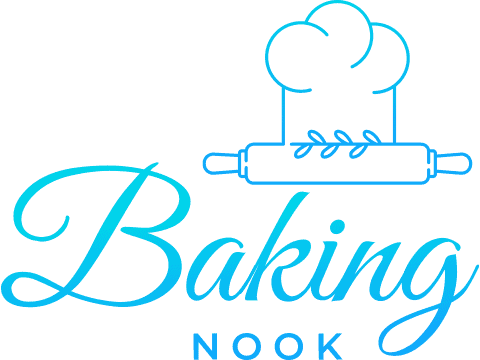This post contains affiliate links.
Many of us have distinct childhood memories that revolve around caramel. For me, I remember getting a piece of caramel from my grandmother, who always carried a few pieces of caramel in her coat pocket. I also remember my mother making caramel apples every year for Halloween.
To make caramel, you can boil a can of sweetened condensed milk until the sugar inside of it turns brown in color. The sugar caramelizes with the addition of heat. Since sweetened condensed milk has more sugar than regular milk, it makes it the ideal ingredient to use to create caramel.
Although sweetened condensed milk does not turn into the traditional caramels that my grandfather and mother used, I prefer the caramel it produces when baking. I use heated condensed milk to create decadent coffee, tea, pies, and cakes. After I share my methods with you, you’ll be able to do the same.
How Does Condensed Milk Become Caramel?
As a general rule, condensed milk turns into caramel by getting heated up until the sugar in it turns brown in color. Sweetened condensed milk has more sugar content than regular milk which makes it the ideal ingredient to use for caramelizing.
Although dulce de leche and caramel are not the same, dulce de leche is often referred to as caramel and I frequently use it as a substitute for caramel in my dishes. You can do the same.
*By the way, the Double Boiler works great when you’re trying to melt something like chocolate while heating up other ingredients. I recently wrote an article that gives a breakdown of the 3 Best Double Boilers that people use in each stage of their baking journey.
After reviewing these double boilers, the Best Overall Double Boiler was the Stainless Series 2-Quart Covered Double Boiler which worked great for the dessert needs in my kitchen. You can check out this Double Boiler on Amazon!
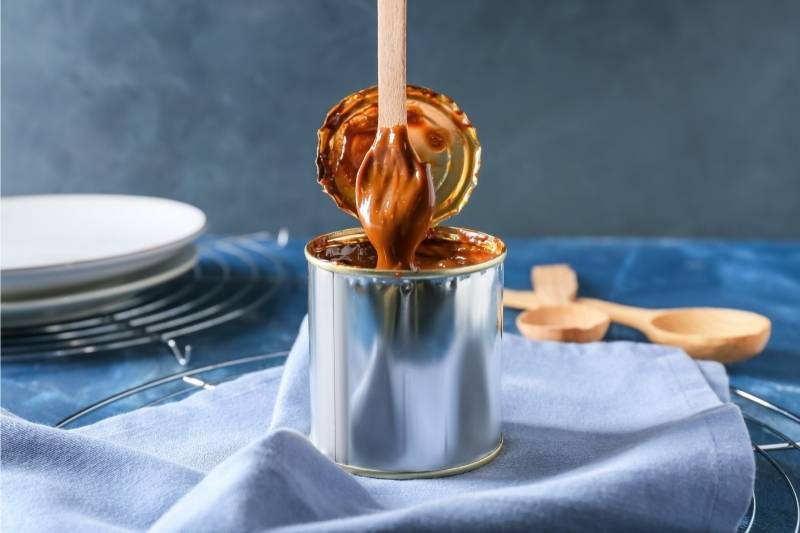
How Are Caramel and Dulce de Leche Different?
Dulce de leche occurs when you heat milk and sugar together.
To get a perfect dulce de leche for my sweet dishes, I use heated sweetened condensed milk. Being able to turn a pantry staple into satisfying caramelized milk is one of my favorite parts about making dulce de leche, and the fact that it’s so easy to do also makes it one of my favorite kitchen tricks.
To get true caramel, you need to use granulated sugar and slowly cook it down, adding only water.
If you think about it from a different perspective, condensed milk does not become caramel. Instead, condensed milk becomes dulce de leche. Dulce de leche is caramelized milk, which is different from caramel.
*Side Note: I recently wrote an article about How to Boil A Can of Condensed Milk The Right Way. This article gives you a step-by-step outline for boiling a can correctly. You can check out this article here!
What Is Condensed Milk?
Condensed milk is milk that has had the water extracted from it. During the extraction process sugar is added to it to enhance its flavor, making it excellent for baking and cooking with. A can of condensed milk has approximately 60% of the total water content removed from the milk.
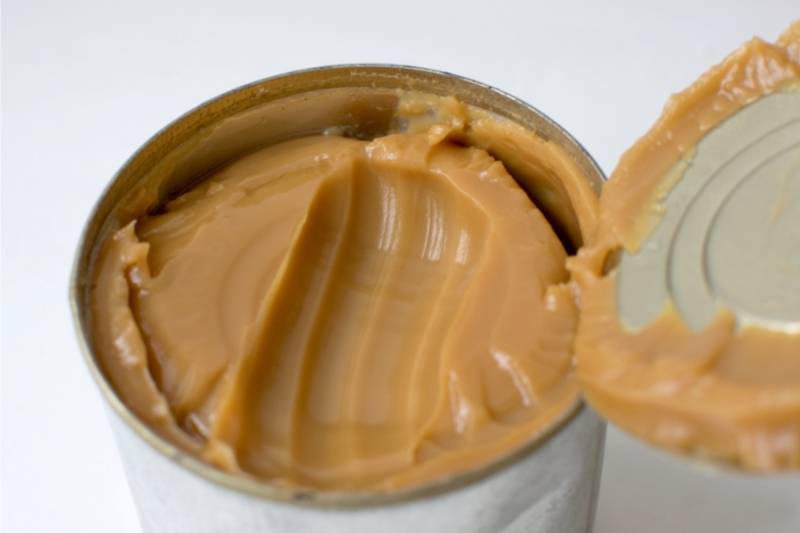
*By the way, I enjoy making caramel apples for almost any holiday and I always wondered how to store them correctly. I recently did my research and wrote an article about The Best Ways To Store Caramel Apples To Keep Them Fresh. You can check out this article here!
Traditionally, condensed milk has been a staple in baker’s kitchens. The product is used to create a variety of sweet desserts and treats, including:
- Dulce de leche
- Pound cakes
- Key lime pie
- Sweet coffee drinks
- Tres Leches
One of the ways that I try to incorporate the taste of caramel into my recipes is to use heated sweetened condensed milk. This easy method of making caramelized milk allows me to revel in my childhood memories while making grown-up versions of my caramel-inspired recipes.
What Are the Differences Between Condensed Milk, Sweetened Condensed Milk and Evaporated Milk?
Condensed milk and sweetened condensed milk are the same product. You will not see cans of milk labeled “unsweetened condensed milk,” and any can that you see labeled “condensed milk” will have sweetener in it.
Evaporated milk is a canned cow’s milk product that does not have any additional sweetener. Like condensed milk, evaporated milk has had 60% water removed from the milk.
Both evaporated milk and condensed milk undergo homogenization and sterilization through heat. However, evaporated milk may have more preservatives to keep the product shelf-stable due to the lack of sugar. It usually comes in a can and has a shelf life of about two years if it is properly stored and unopened.
The added sugar in condensed milk helps to reduce the growth of bacteria
I often use evaporated milk for savory dishes, such as dressings and breading. But condensed milk is the product I use when I need to make an impressive dessert for friends and family.
*By the way, I recently wrote an article comparing Condensed Milk Vs Evaporated Milk. This article breaks down all the similarities and differences between condensed milk and evaporated milk as well as how to convert one into the other. You can check out this article here!
Is It Safe to Boil a Can of Condensed Milk?
As a whole, it is safe to boil a can of condensed milk, but only if you do it correctly. You can boil a can of condensed milk by placing the can in a pot full of water. Following all of the safety steps can prevent the condensed milk can from potentially exploding.
The steps you must take in order to boil condensed milk safely include:
- Completely submerge the can in boiling water.
- Always remove the label from the can.
- Use cans with solid lids, and do not use pop-off lids.
- Use tongs to turn the can halfway through.
- Make sure the can stays submerged in water for the entire time it is boiled. You will need to boil the can for 3 hours to get the perfect caramel product, so you will need to constantly add water to keep the can fully submerged.
- Always allow the can to cool before you open it.
WARNING!
You should only boil a can of condensed milk if you can constantly keep an eye on the water level and let the can fully cool before opening it! Not doing this can potentially make the can explode and cause bodily harm.
I have used the stovetop boiling method many times, and I have never experienced any accidents. If you follow the instructions and always keep the can be submerged in boiling water, it should be a safe and convenient way to make dulce de leche for you, too.
However, there are other alternative ways to heat condensed milk and end up with caramelized milk if you do not want to risk an accident with boiling cans.
*By the way, I recently wrote an in-depth article about How To Safely Boil a Can of Condensed Milk. This article talks about what you’ll need to do to make sure that the can of condensed milk doesn’t explode when boiling it. You can check out this article here!
Why Don’t Cans of Condensed Milk Explode When You Boil Them?
Cans of condensed milk do not explode when you boil them because the boiling point of water is lower than the boiling point of condensed milk. As long as the can stays covered in water, the water outside of it will never be hot enough to make the condensed milk boil, expand and explode.
If the can is not submerged in water, the can absorbs heat from the bottom of the pot and can get hotter than the water still inside the pot. This can cause the can to expand and explode.
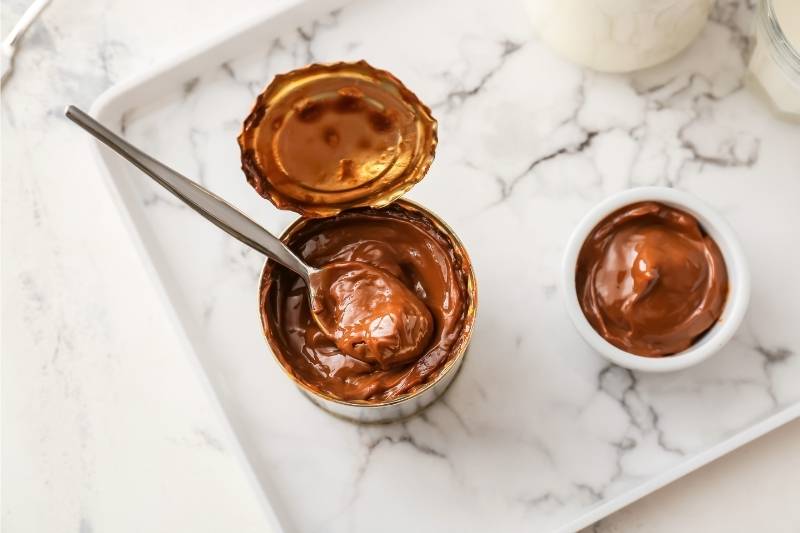
*Side Note: You might also want to know How To Make Fudge Without Condensed Milk. I recently wrote an article talking about what you must know when Making Fudge Without Condensed Milk, which you can check out here!
How Can You Make Caramel With Condensed Milk Without Boiling the Can?
As a general rule, you can use the double boiler method of heating condensed milk instead of boiling the can. Place the condensed milk can on the top pan of the double boiler while filling the bottom pan with water. This will prevent the can from getting any direct heat.
Nestle, Eagle Brand, and Borden recommend this method over boiling the can.
To use the double boiler method of heating condensed milk, follow these steps:
- Open the can of condensed milk and pour it into the top of a double boiler
- Place the top over a pan with boiling water
- On low heat, simmer the condensed milk until it turns to the desired caramel shade and preferred thickness
This method will not take as long as boiling the can will. I have used this method when I am in a hurry and would like to have my dulce de leche more quickly to use for one of my desserts. Although this method is quicker, it will still take up to one and a half hours to be complete.
A double boiler is two pots that are used together to prevent any direct heat from touching the top pot. The double boiler works great when you’re trying to melt something like chocolate while heating up other ingredients.
Can You Use a Microwave to Make Caramel Out of Condensed Milk?
As a whole, you can use a microwave to make caramel out of condensed milk. Pour the desired amount of caramel in a 1 or 2-cup glass measure. Turn on the microwave for about 12 to 18 minutes or until the sugar is very thick and brown-colored. Stir the caramel quickly every two minutes until smooth.
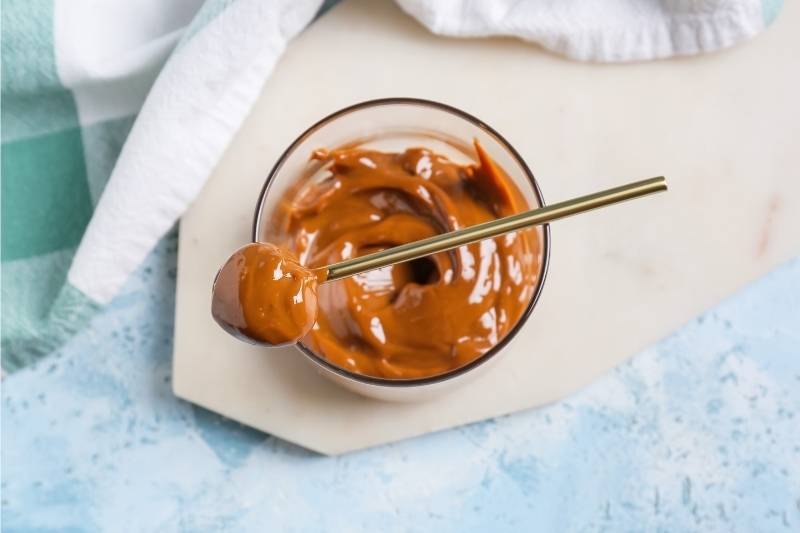
To heat the condensed milk in a microwave, follow these directions:
- Pour one can of condensed milk into a microwavable dish.
- Place the microwave on medium power and cook for four minutes, stopping to stir halfway through.
- After four minutes, turn the setting to medium-low, or 30% power. Continue to cook for up to 18 minutes, stirring every two minutes.
You will achieve the same results by microwaving condensed milk that you would achieve by heating it in a double boiler or boiling the can.
*By the way, I recently wrote an article about How To Microwave Condensed Milk To Make Caramel. This article tells you everything you need to know when making caramel out of condensed milk inside a microwave. You can check out this article here!
What Are the Best Uses of Condensed Milk Caramel?
The best uses of condensed milk caramel are as a dip, sauce, or topping. The caramel that comes from condensed milk is very rich and very sweet, so it is best used as an accent to other dishes.
I like to pair my condensed milk caramel with fruit slices. It goes particularly well with apples and bananas.
Another way I use condensed milk caramel is as a topping for brownies and a decadent layer between two thin shortbread cookies. If you want to truly make your cheesecake stand out, adding a decorative layer of condensed milk caramel will do it.
If you love dessert, you will find new and creative ways to use condensed milk caramel every time you bake something new.
How Long Does Condensed Milk Caramel Last?
Condensed milk caramel will last a few weeks in the refrigerator. Since the “caramel” that comes from sweetened condensed milk is actually caramelized milk, you will need to store it in the refrigerator, and it will not last as long as traditional caramel made from granulated sugar will.
The dulce de leche often gets hard in the fridge. Fortunately, you can easily microwave small amounts of caramel sauce in the microwave. I do this when I want to use the dulce de leche to top a dish of ice cream.
To do this, I prefer using a thermometer. I recently came across a Candy Thermometer with a Hanging Hook that works perfectly for this! I use this thermometer for pretty much anything I make in the kitchen that requires knowing the temperature. You can check out this thermometer on Amazon!
To Summarize…
Whether you decide to call it caramel or dulce de leche, boiling condensed milk will create a delicious dessert for your guests every time!
After a bunch of trial and error, learning the right way to caramelize sweetened condensed milk has saved me some much time!
